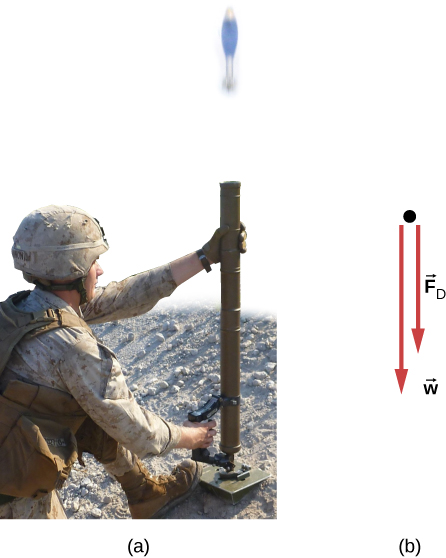| << Chapter < Page | Chapter >> Page > |
Recall that and . If acceleration is a function of time, we can use the calculus forms developed in Motion Along a Straight Line , as shown in this example. However, sometimes acceleration is a function of displacement. In this case, we can derive an important result from these calculus relations. Solving for dt in each, we have and Now, equating these expressions, we have We can rearrange this to obtain

The acceleration depends on v and is therefore variable. Since we can relate a to v using the rearrangement described above,
We replace ds with dy because we are dealing with the vertical direction,
We now separate the variables ( v ’s and dv ’s on one side; dy on the other):
Thus,
Check Your Understanding If atmospheric resistance is neglected, find the maximum height for the mortar shell. Is calculus required for this solution?
128 m; no
Explore the forces at work in this simulation when you try to push a filing cabinet. Create an applied force and see the resulting frictional force and total force acting on the cabinet. Charts show the forces, position, velocity, and acceleration vs. time. View a free-body diagram of all the forces (including gravitational and normal forces).

Notification Switch
Would you like to follow the 'University physics volume 1' conversation and receive update notifications?